The Al Badiah farm is an oasis in the middle of the Saudi Arabian desert. Located 168km southeast out of Saudi Arabian capital Riyadh, the Al Badiah dairy farm is the biggest farm of the Almarai holdings.
As part of a Department of Agriculture and Bord Bia trade mission to the Gulf States last week, the Irish Farmers Journal visited the farm to see the sheer scale of the farm, which operates in temperatures of in excess of 50°C during the summer.
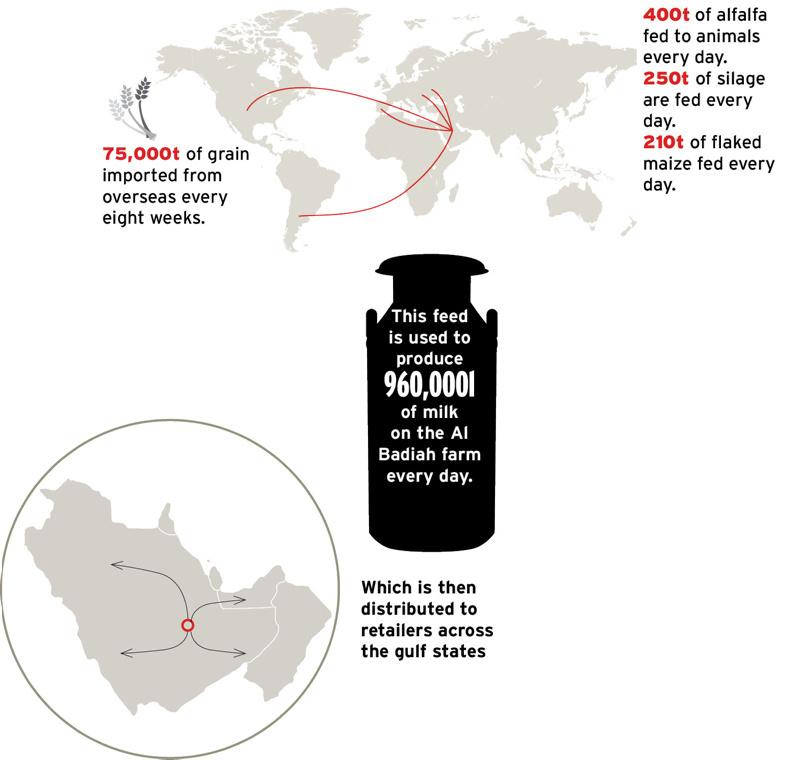
The farm stats are, in many ways, beyond comprehension. Al Badiah is home to 47,000 dairy stock, with 22,500 milking cows. It produces 960,000 litres of milk every day or 350m a year. This is the equivalent of 700 average Irish dairy farms. A milk truck collects milk and leaves the farm every 40 minutes.
The milk is brought to the Almarai processing unit nearby and is on shelves across the Gulf States within a day.
The cows are milked four times every day, with the first milking at midnight. The average yields are 14,500l, the equivalent of three Irish dairy cows to every one Al Badiah cow. The plan is to get the cows up to 15,000l within the next five to 10 years.
The cows are fed up to 30kg dry matter daily.
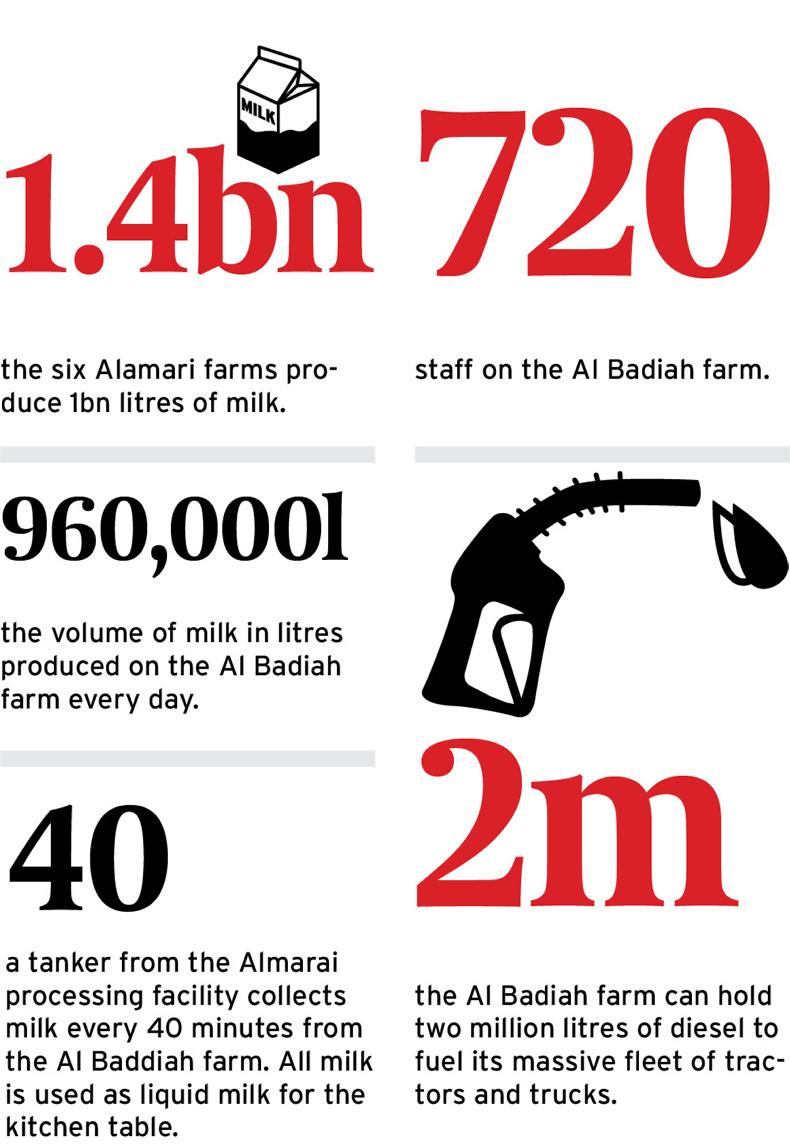
Every week, 100 cows are culled – the size of a large Irish dairy farm. Bull calves are sold at 14 days old for €275/head to the veal market. The prices have fallen from €450/head last year.
The Al Badiah farm is managed by Tony Gavin from Co Tipperary. Gavin joined Almarai 22 years ago and has worked his way up. He currently manages a staff of 720 people.
“I started off by doing the farm apprenticeship back in Ireland and working in Mallow then for a few years before eventually coming out here in 1995. I started off then as a unit manager covering all areas; the health, the breeding, the youngstock, the milking parlour, the feeding and then moving to assistant manager progressing to farm manager.”
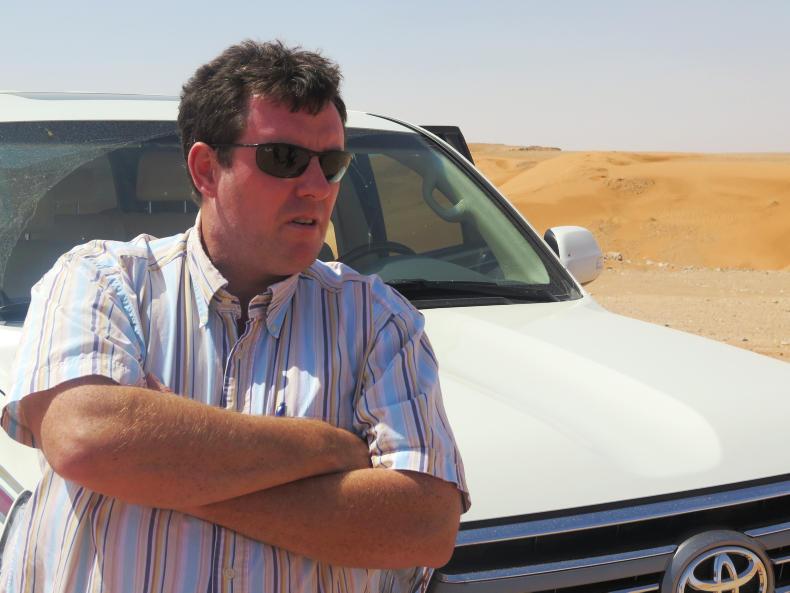
Tony Gavin
Sourcing feed is the biggest logistical challenge, Gavin said. To help conserve water, Alamarai has been purchasing farms in north and south America as well as having supply of grain, alfalfa and other crops from the likes of Romania, Ukraine and Spain. “The main ingredients for the farm would be alfalfa and maize corn. All the maize corn is bought in from the US by boat and then our own trucks bring it in here. The alfalfa, up to now, has been all grown locally mostly up in Al Jouf [on the Jordanian border]. That’s between 500 and 800 miles away, and transported down here. That’ll change in 2018 when 100% of our alfalfa will have to be brought in from overseas,” he said.
The farm has 52 pits for storing maize, each 84m long – the width of a standard GAA pitch.
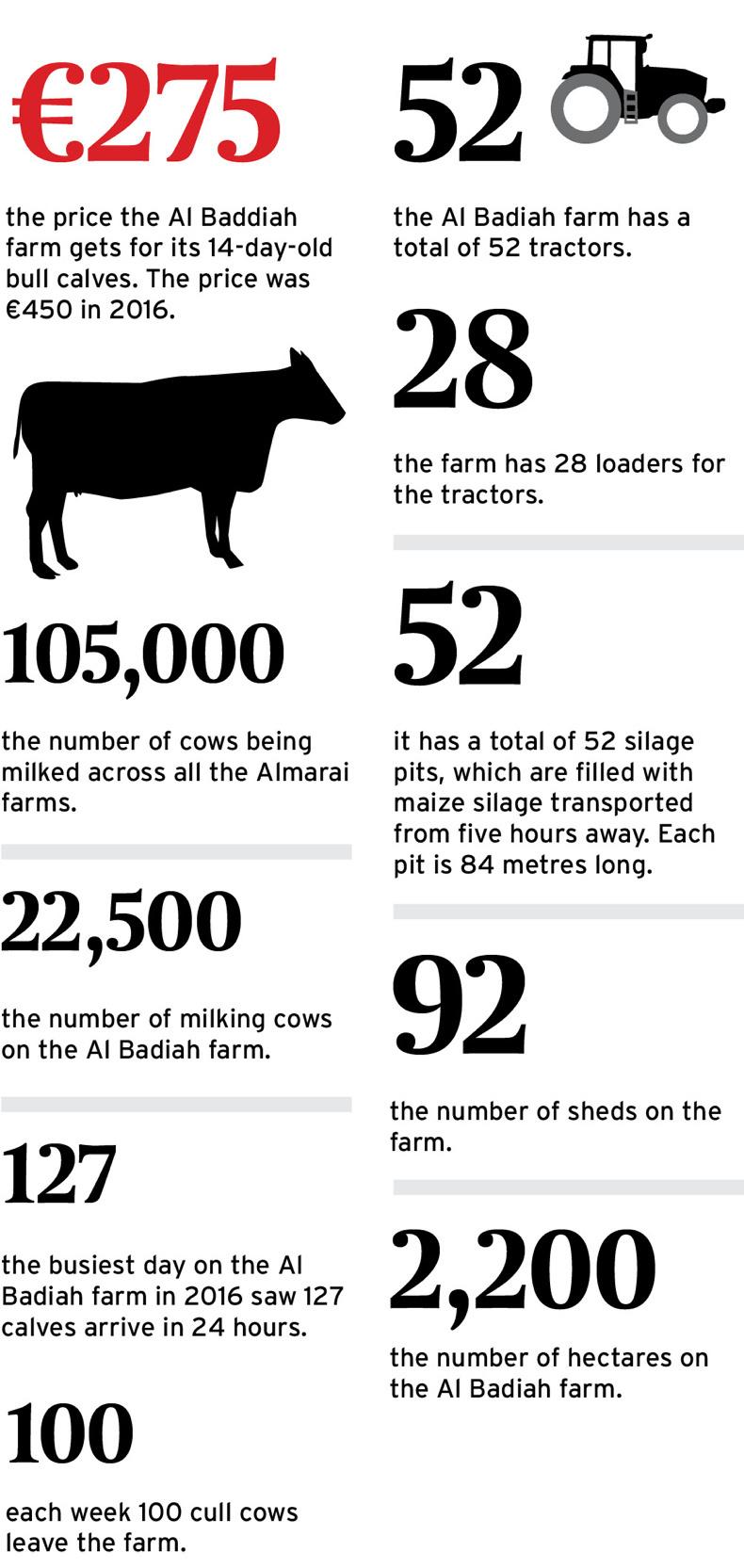
A day on the farm
Gavin gave the Irish Farmers Journal an insight into what an average day is like for him: “’Tis 24/7 here and milking starts at midnight and we milk the 22,500 cows and we are finished by 5am. Then everything starts again. The day shift starts at 6am and they’re finished at 11am. Then there are another couple of milkings. There are four shifts in the day. My day normally starts before 6am to meet up with whoever is on nightshift to see how things went during the night. By 6pm it’s close to finishing time.
“We are getting to 60l and even at 100 days we are getting 55l … [we are getting] 14,500l per head,” he said.
Given its desert location, water and the environment are a concern for the farm. Gavin said the farm recycles 70% of all water used. The rest is sourced drilling deep into the desert.
However, for Gavin this is not the biggest challenge. “The big issue here is keeping costs down and increasing your yields year-on-year ... I suppose the tough conditions are the worst because we are so isolated out here. You are away from home.”
Listen to an interview with Gavin in our podcast below:
Listen to "Tipperary man talks managing a dairy farm in Saudi Arabia" on Spreaker.
The herd saw enormous growth over the past 10 years to meet a growing demand in the Gulf for dairy but this has been slowing in recent times.
“We are slowing down expansion so that should allow us to cull a few more and that will increase our yield per head. With the growth in the market out here, we probably expanded by about 7,000 cows per year so we were breeding up that. But that is slowing down now.
“We’re taking out the bottom 10% of the herd so that should get rid of the poor yielders … before 95% of cows were bred geared towards expansion,” Gavin said before adding that beef breeds are being used to help address fertility as well as giving another market for progeny.
So having been out in the Saudi Arabian desert, does Tony have any interest in returning to north Tipp?
“Arah, not yet. Things are ticking away nicely here for another few years.”































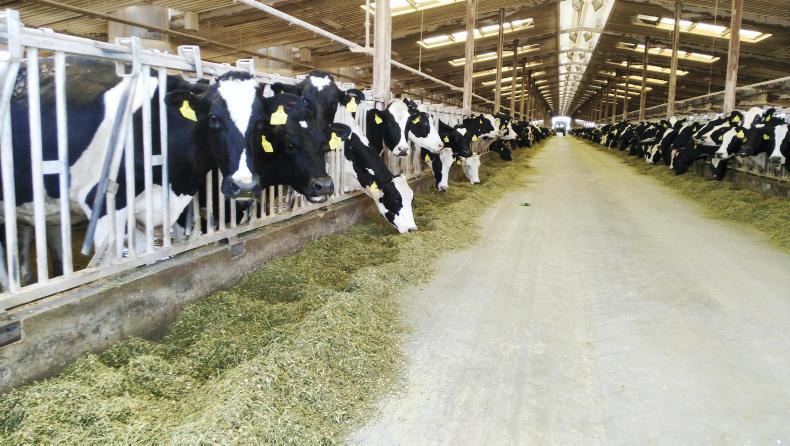
SHARING OPTIONS